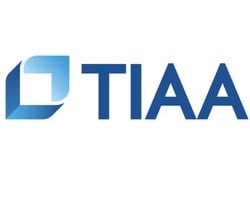For decades, companies have been organized hierarchically with the CEO at the top, various management layers in the middle, and everyone else at the bottom. More recently, flat organizations have come into fashion, removing management layers to foster a collaborative environment. Both have merits, but a structure that clashes with company strategy can result in HR headaches and employee relations challenges.
Beyond structure, companies must also choose to organize by function or division. Functional groups are teams built around particular roles, such as IT or manufacturing. Divisional groups are built around categories such as product lines or customers. A matrix structure is a hybrid of the two, typified by dual reporting to a functional manager and a divisional group.
How a company is structured and managed affects how employees are directed and motivated. Similarly, a company’s employee relations strategy needs to take into account the type of structure. Different types of structures may bring different types of challenges and issues when it comes to employee relations concerns.
IDEAS FOR MANAGING EMPLOYEE RELATIONS IN HIERARCHICAL FIRMS
In a hierarchy, decision-making happens high in the pyramid, with guidance flowing down to functional levels. Formal policies promote stability. Decisions are measured and deliberate, but agility and innovation are of lesser importance.
From an employee relations perspective, having formal policies and hierarchies can be comforting because it is often very clear about how these types of issues are handled. At the same time, it can be challenging at times simply because bureaucratic thinking can make things more complex than they need to be. For leaders handling this essential practice at hierarchical firms, it’s important to ensure that you are transparent about ownership and confidentiality. For further reading on how this works in larger organizations, check out how to balance HR and employee relations responsibilities.
TIPS FOR MANAGING EMPLOYEE RELATIONS IN FLAT ORGANIZATIONS
Flat structures, on the other hand, provide significant freedom. With fewer layers of management, authority is granted more generously, resulting in quick response times and high customer focus.
Valve Software, the company behind several successful video game series, is a good example. It has 300 employees but no managers. Co-founder Gabe Newell in a Bloomberg Businessweek interview said, “Managers are good at institutionalizing procedures, but in our line of work, that’s not always good.” This structure is popular with those who value creativity and collective achievement. On the downside, with fewer layers of management, advancement may be limited and broader boundaries can also mean role ambiguity.
On the employee relations front, it could potentially be more challenging for workers to have their concerns heard when there are no authority figures to help solve pressing issues. Employees in more traditional companies know that they can visit HR or move up their management chain of command if an issue is not being resolved, but flat approaches might cause issues with this. In those instances, companies should be overly communicative about how to raise issues that go beyond the normal flow of work. For example, employees should know where to report theft or how to bring harassment claims, even if the person doesn’t have a formal “boss” to report to.
WAYS TO MANAGE EMPLOYEE RELATIONS IN A MATRIXED ENVIRONMENT
A matrix organization can provide the best of both worlds, providing divisional reporting plus the creative freedom of a team environment. Often divisions make policy decisions, while project managers perform day-to-day direction. In terms of challenges, matrixed firms often face increased time spent coordinating work, unclear responsibilities or confusion at having two bosses.
When focusing on the overall strategy for employee relations in this type of workplace, look for cues and themes in the issues being raised. For instance, if the common thread in performance issues is a lack of clarity around work responsibilities, that’s a prime indicator that the matrixed environment is contributing to those issues. In that case leaders should look for ways to better prioritize work or methods to improve collaboration so that workers can focus on the right organizational priorities at the right time.
HR can play a pivotal role in establishing corporate structure, analyzing existing structures and advising leadership if changes are needed. Above all, HR can ensure that the company is attracting and retaining workers who will thrive in the environment and ensure the company’s ongoing success.




